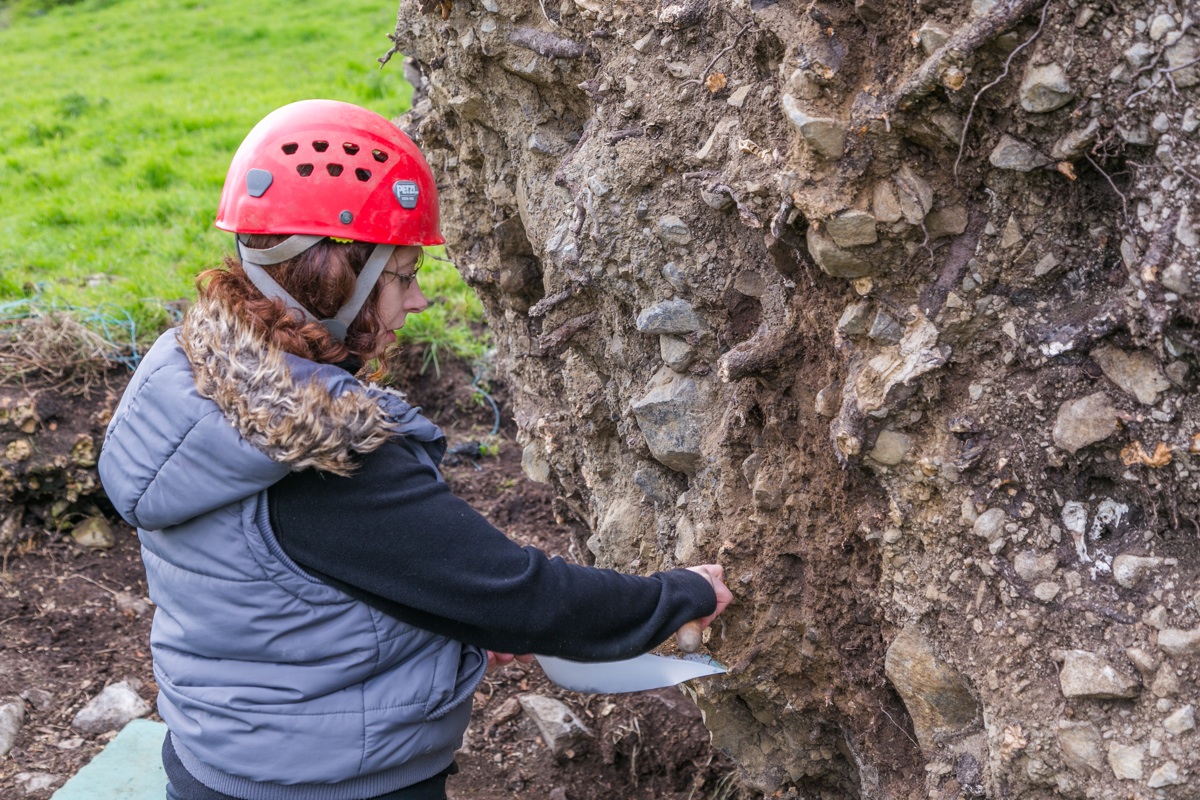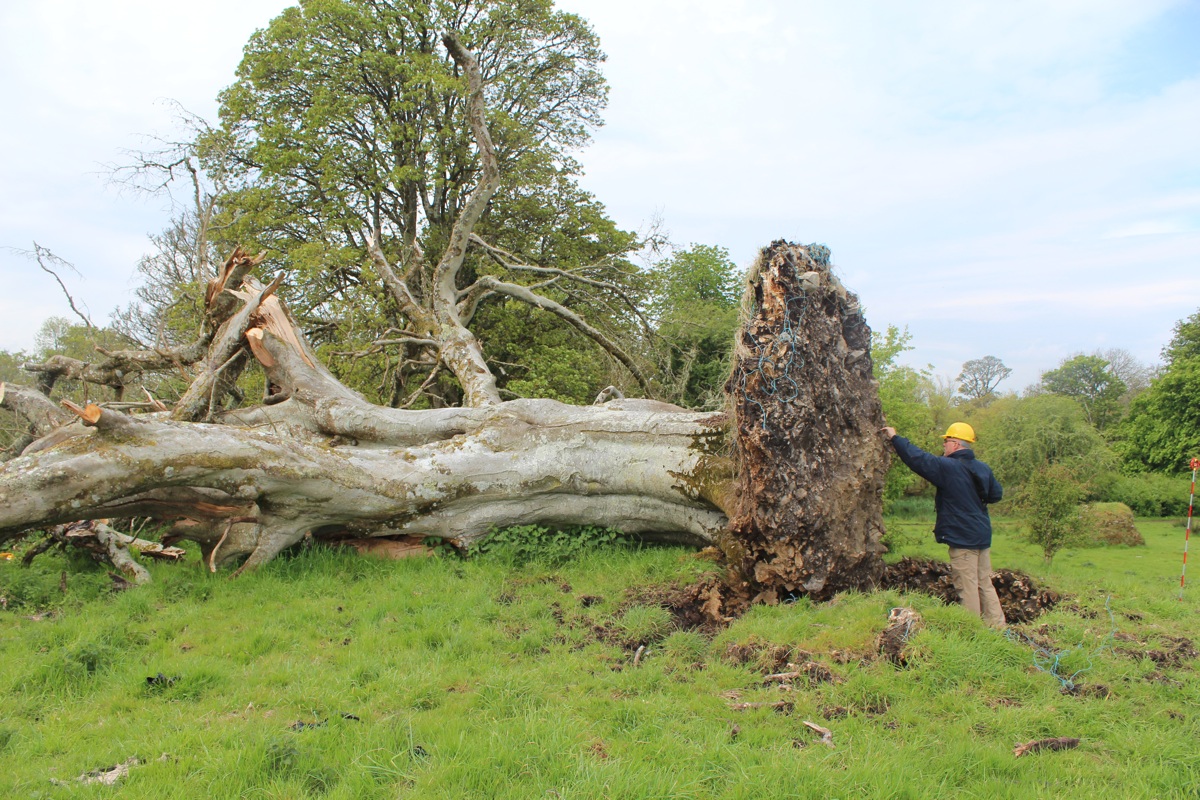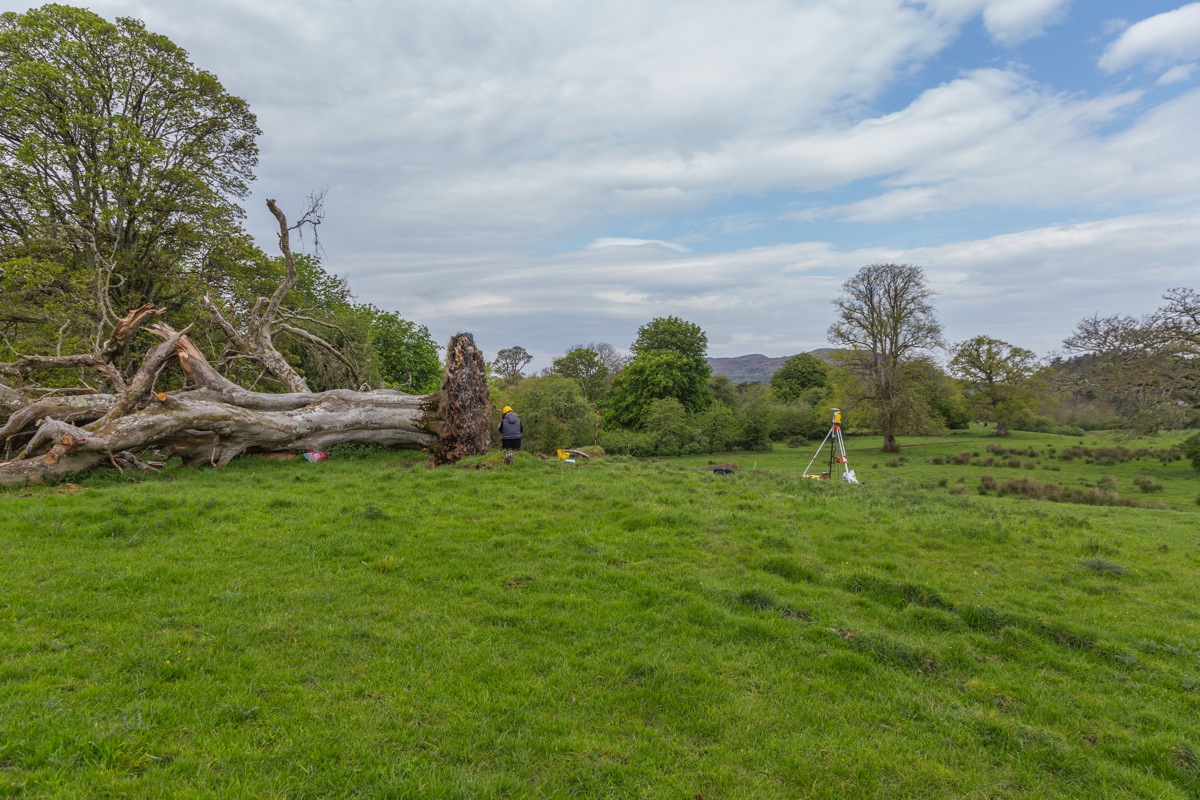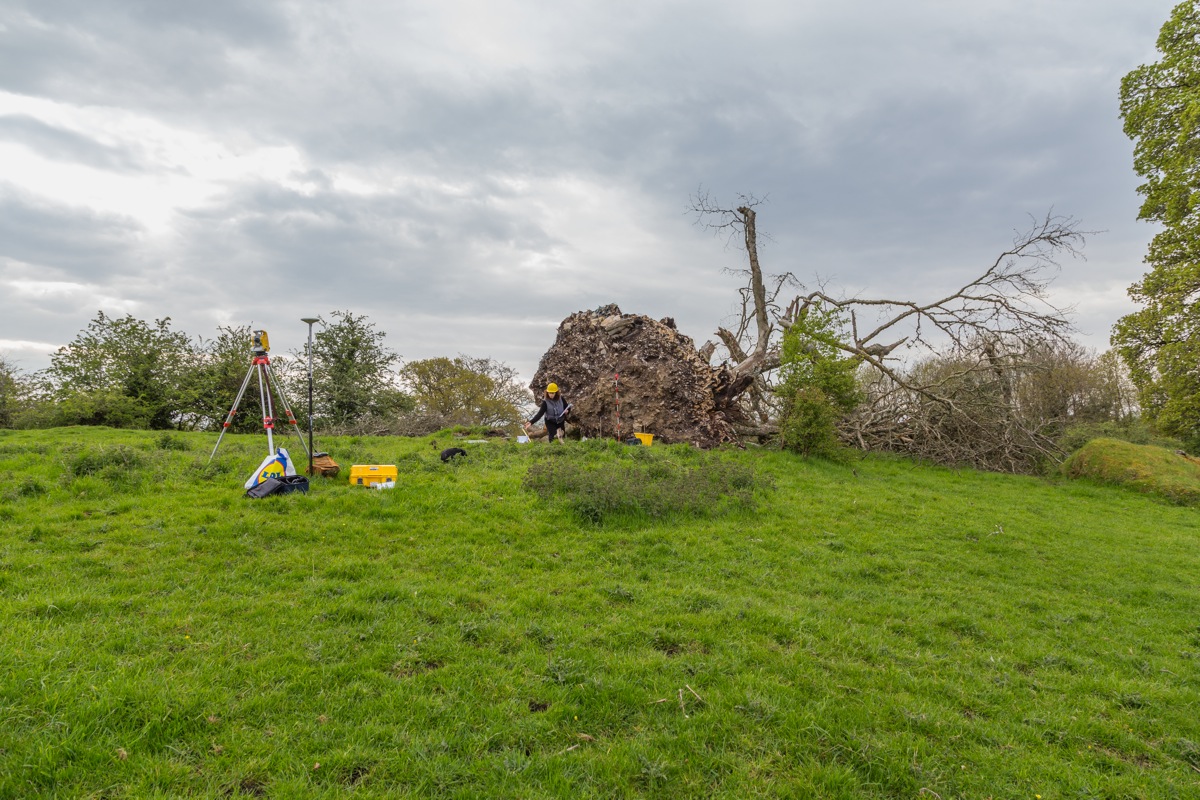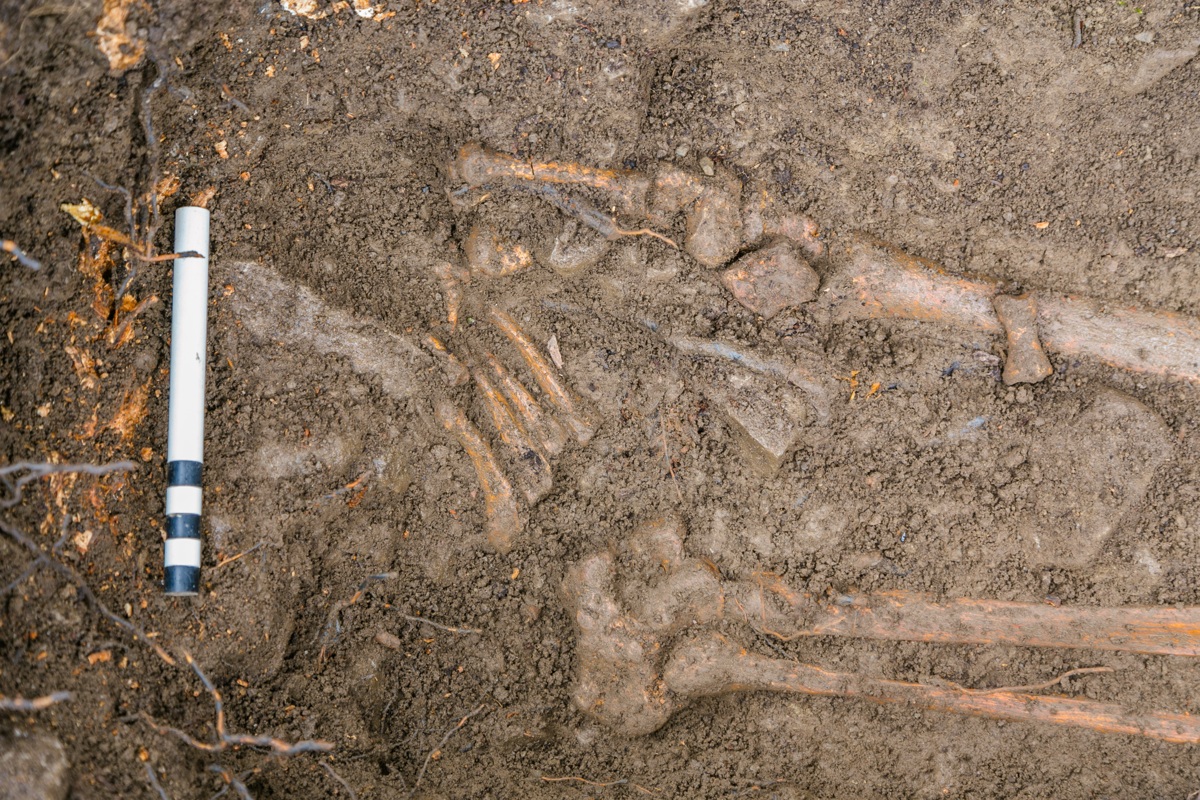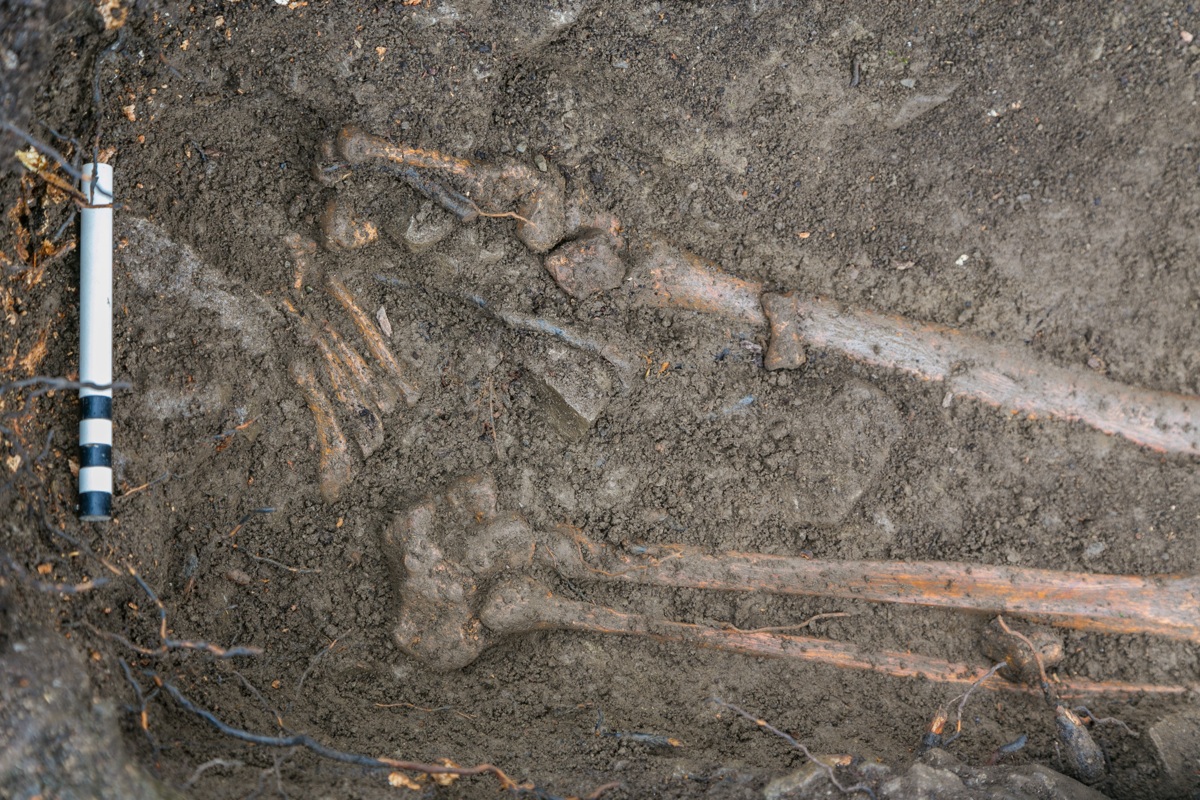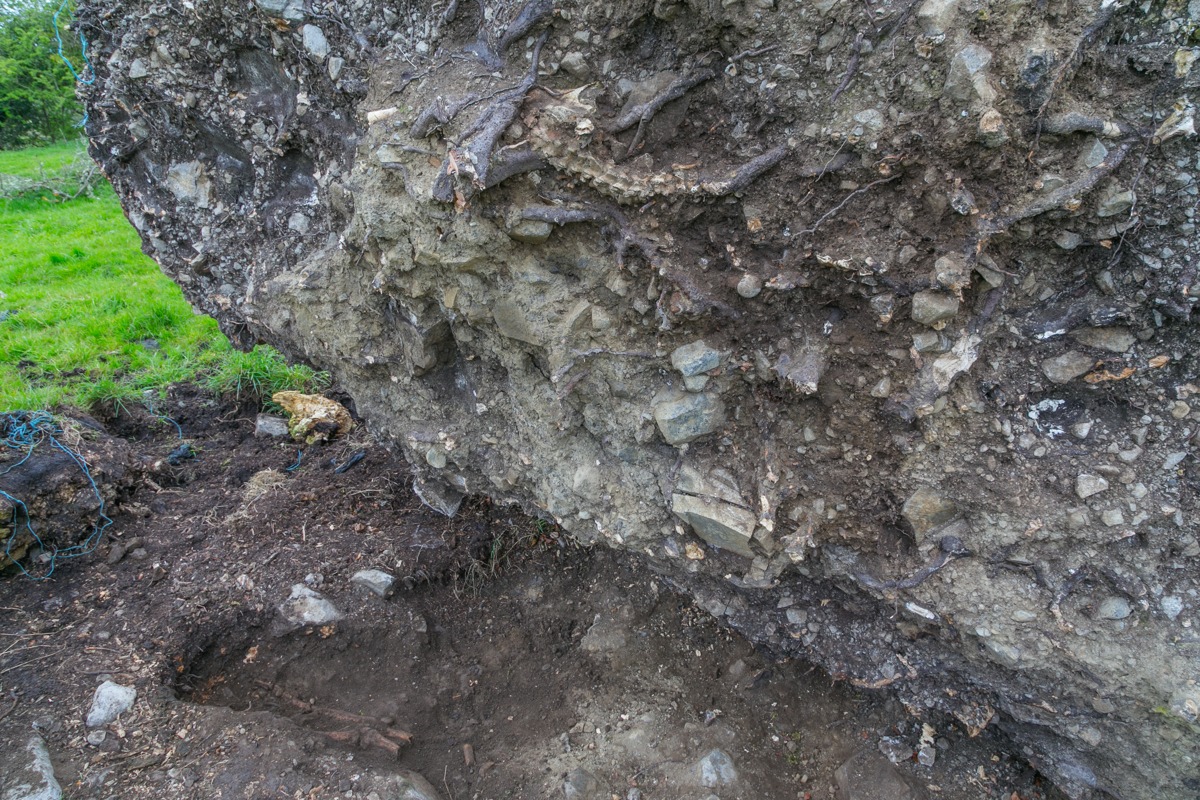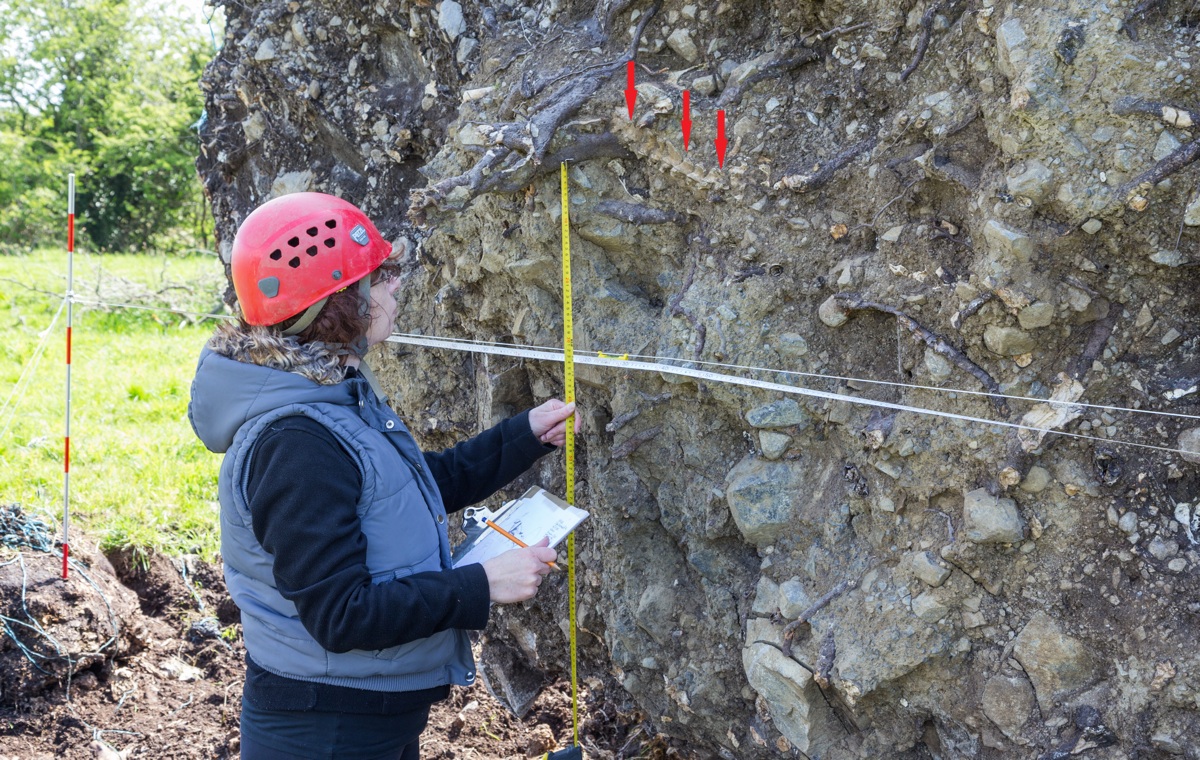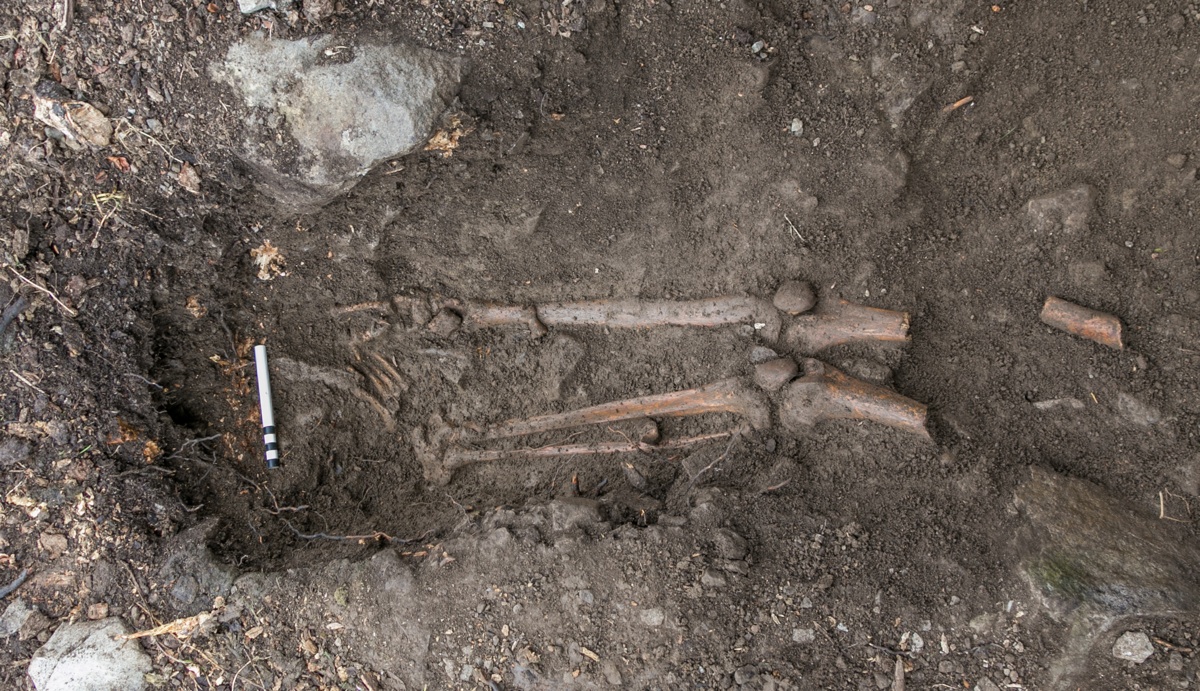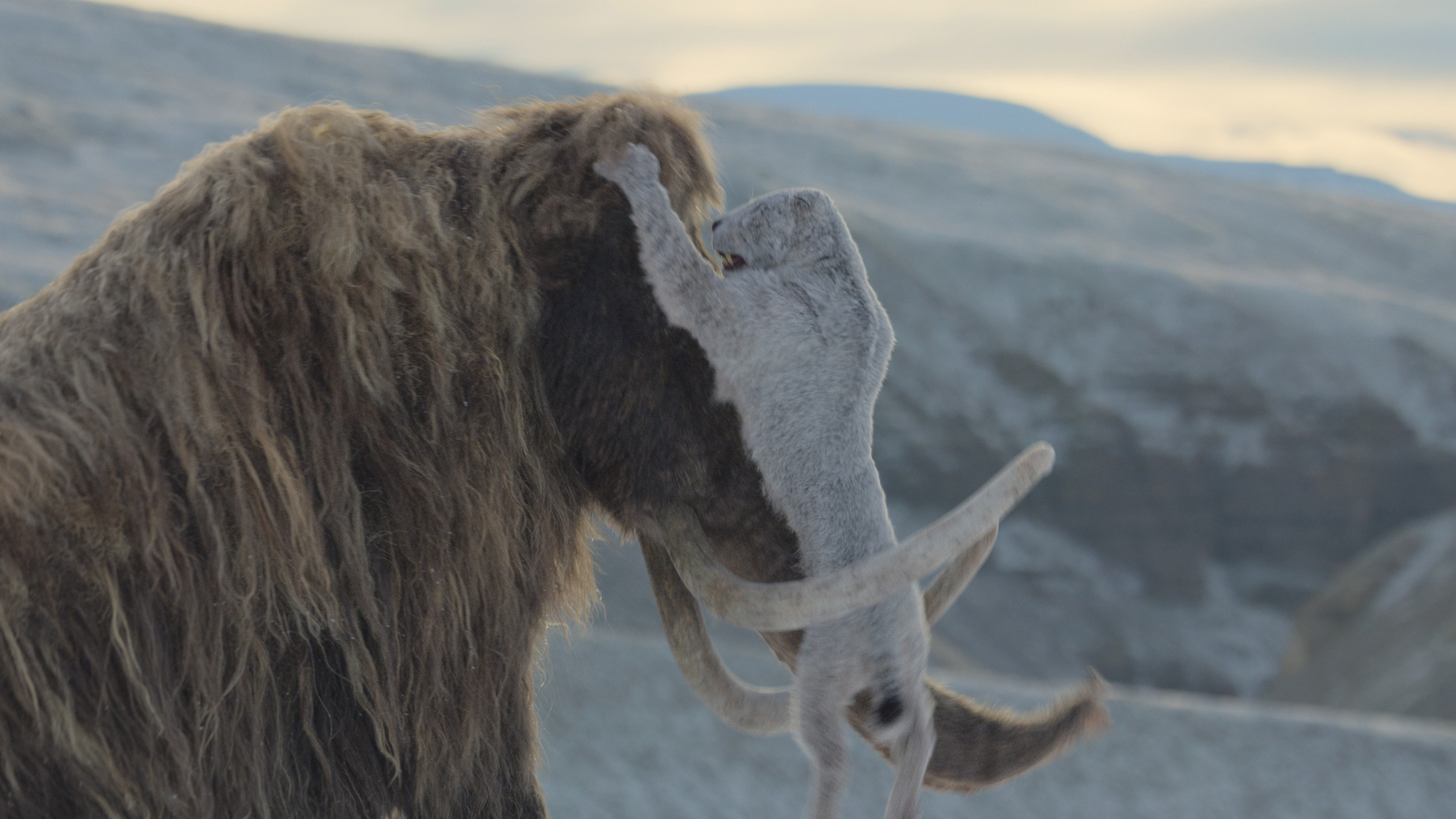In Photos: Medieval Skeleton Entangled in Tree Roots
Like an episode of "Bones," the mangled skeleton of a medieval teenager was found when a 215-year-old birch tree uprooted during a storm in Ireland. The upper body of the remains, entangled in the tree's roots, were ripped from the ground, while the guy's lower legs remained intact in its organic tomb. Here's a look at what archaeologists found at the made-for-TV site. [Read the full story on the medieval skeleton discovery]
Tree tomb
Marion Dowd, an archaeologist and director of Sligo-Leitrim Archaeological Services (SLAS), a private consultancy in Dromahair in Ireland excavates the medieval remains from tree roots. (Photo Credit: Thorsten Kahlert)
Tangled discovery
The full skeleton had been present beneath the 215-year-old beech tree. But when it was uprooted during storms in May, the upper part got ripped from the ground, while the lower legs remained intact. Here, the skeletal remains are excavated from the tree. (Photo Credit: Marion Dowd)
Toppled tree
The tree that toppled during the May storms in Sligo in Ireland. (Photo Credit: Thorsten Kahlert)
Get the world’s most fascinating discoveries delivered straight to your inbox.
Larger than life
Archaeologists on the scene at the site where the beech tree uprooted to reveal a medieval skeleton. (Photo Credit: Thorsten Kahlert)
The feet
The foot bones of the medieval boy, who likely died when he was between 17 and 20 years old, are still in the grave beneath the old beech tree. (Photo Credit: Thorsten Kahlert)
Dating bones
The leg bones of the medieval teenager also remained in the muddy grave. The researchers used radiocarbon dating to put an age on the bones, finding the boy likely lived between A.D. 1030 and 1200. Radiocarbon, or carbon-14, is a naturally occurring isotope of carbon that decays at a known rate and is often used for archaeological dating. (Photo Credit: Thorsten Kahlert)
Medieval spine
Though the leg bones remained in the ground, when the tree uprooted during the storms, the upper part of the body, including the spine (shown here), was torn out of the ground. The leg bones are also visible in the ground in this image. (Photo Credit: Thorsten Kahlert)
Measuring bones
An archaeologist examines the medieval skeleton (including the spine, shown here) at the site in Ireland. Once the investigation is complete, the remains will be sent to the National Museum of Ireland, Dublin, according to Dowd. (Photo Credit: Thorsten Kahlert)
Christian burial
Here, the lower leg bones within the grave; the researchers noted the teenager was given a formal Christian burial. Though the archaeologists have yet to find other burials there, Dowd said 19th-century records suggest a graveyard and church may be hiding in the area. (Photo Credit: Thorsten Kahlert)
Follow Live Science @livescience, Facebook & Google+.
Jeanna Bryner is managing editor of Scientific American. Previously she was editor in chief of Live Science and, prior to that, an editor at Scholastic's Science World magazine. Bryner has an English degree from Salisbury University, a master's degree in biogeochemistry and environmental sciences from the University of Maryland and a graduate science journalism degree from New York University. She has worked as a biologist in Florida, where she monitored wetlands and did field surveys for endangered species, including the gorgeous Florida Scrub Jay. She also received an ocean sciences journalism fellowship from the Woods Hole Oceanographic Institution. She is a firm believer that science is for everyone and that just about everything can be viewed through the lens of science.
